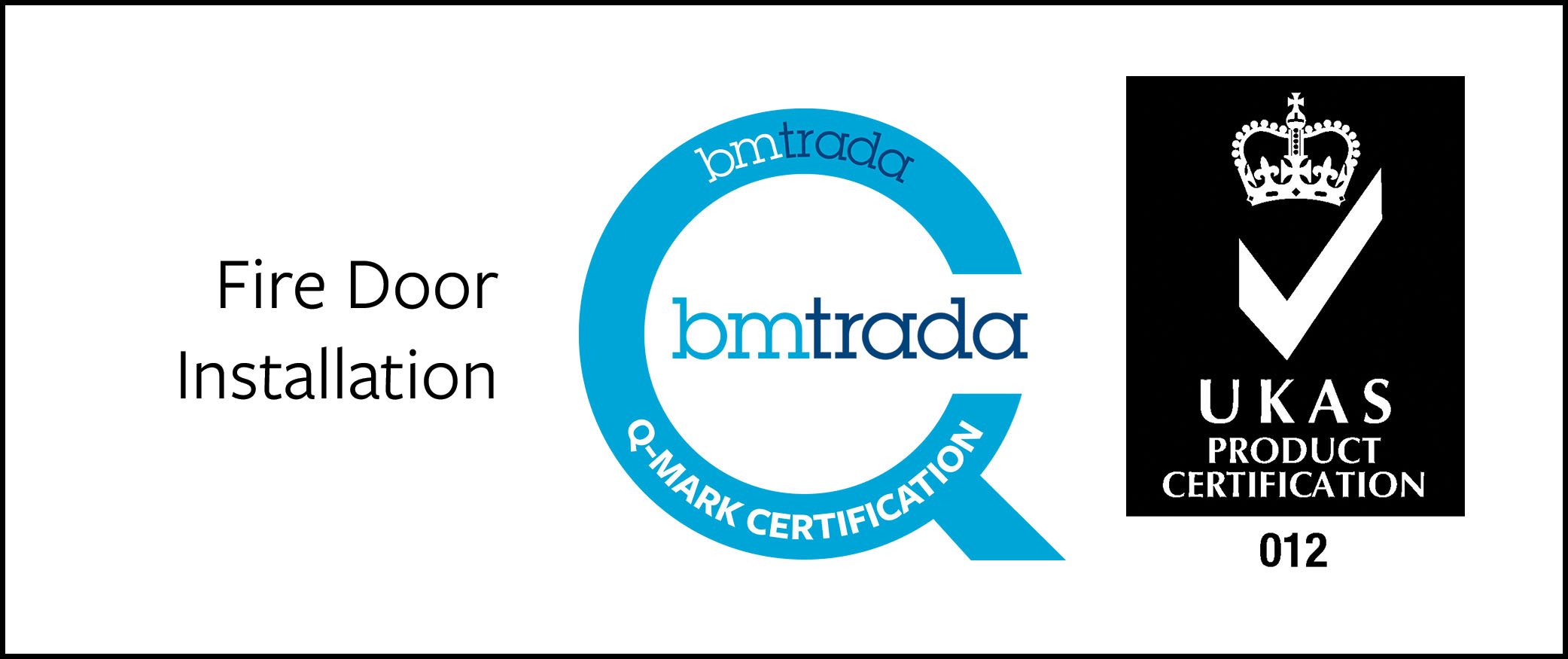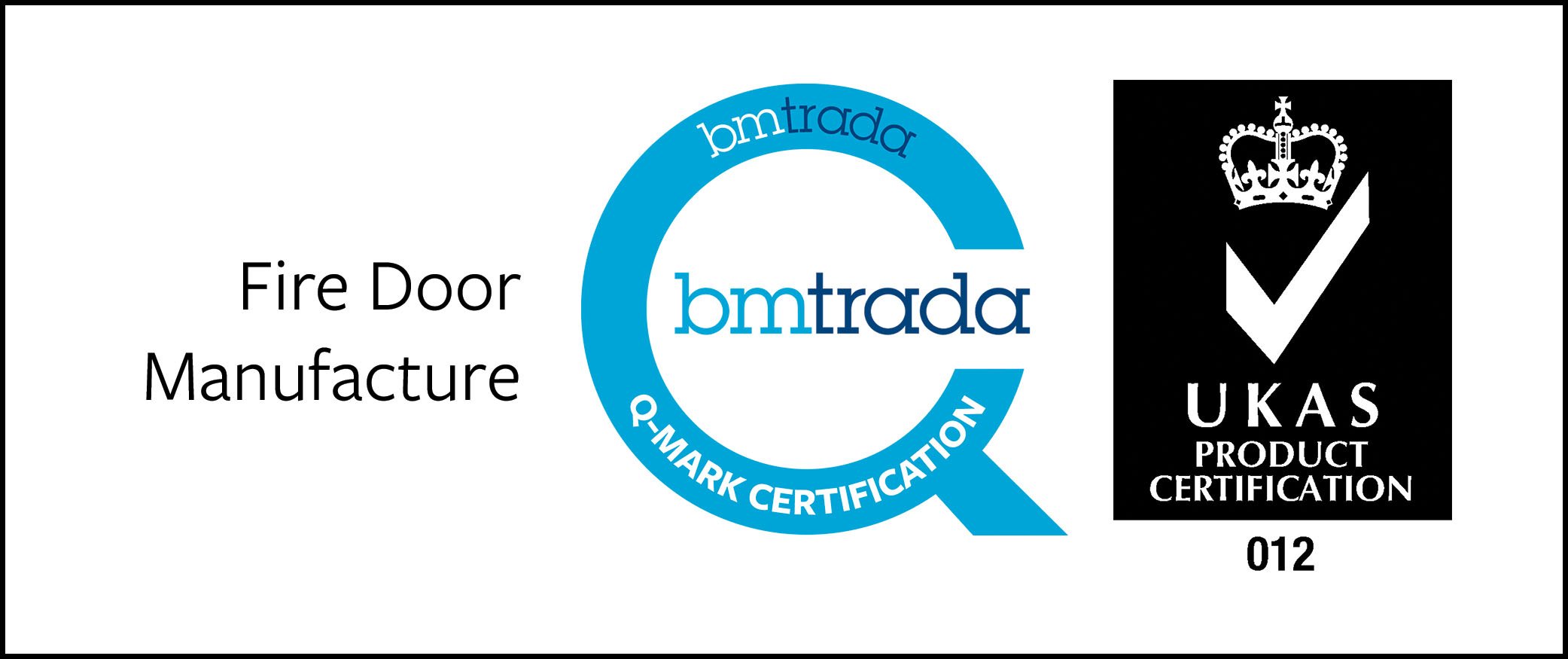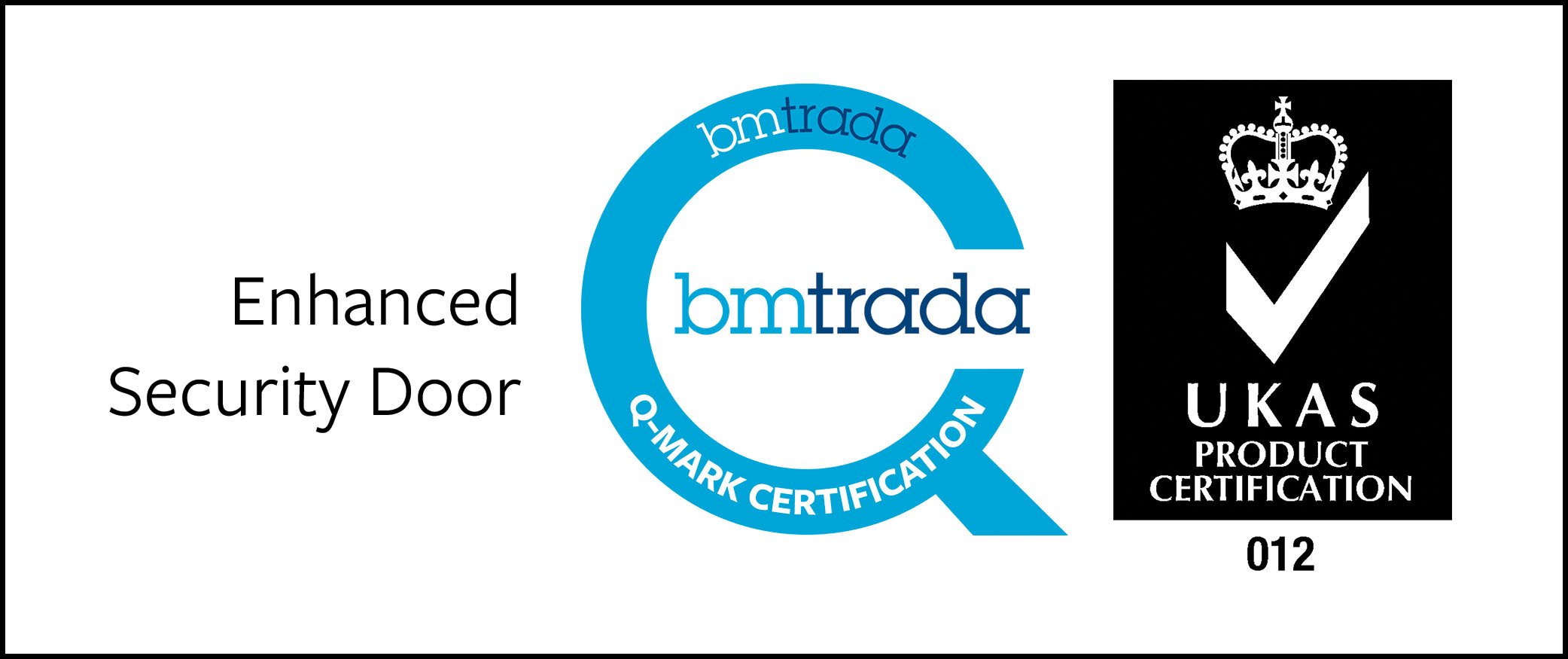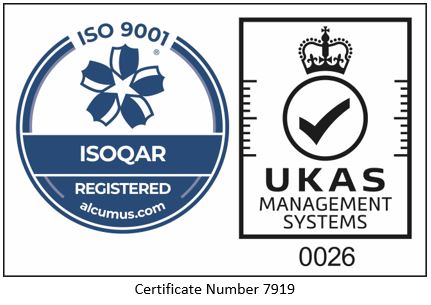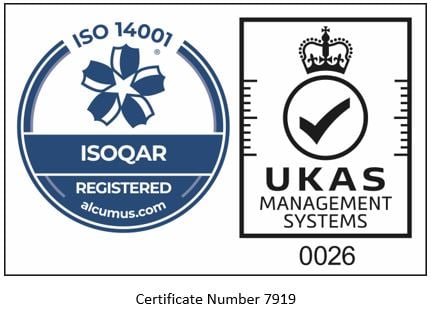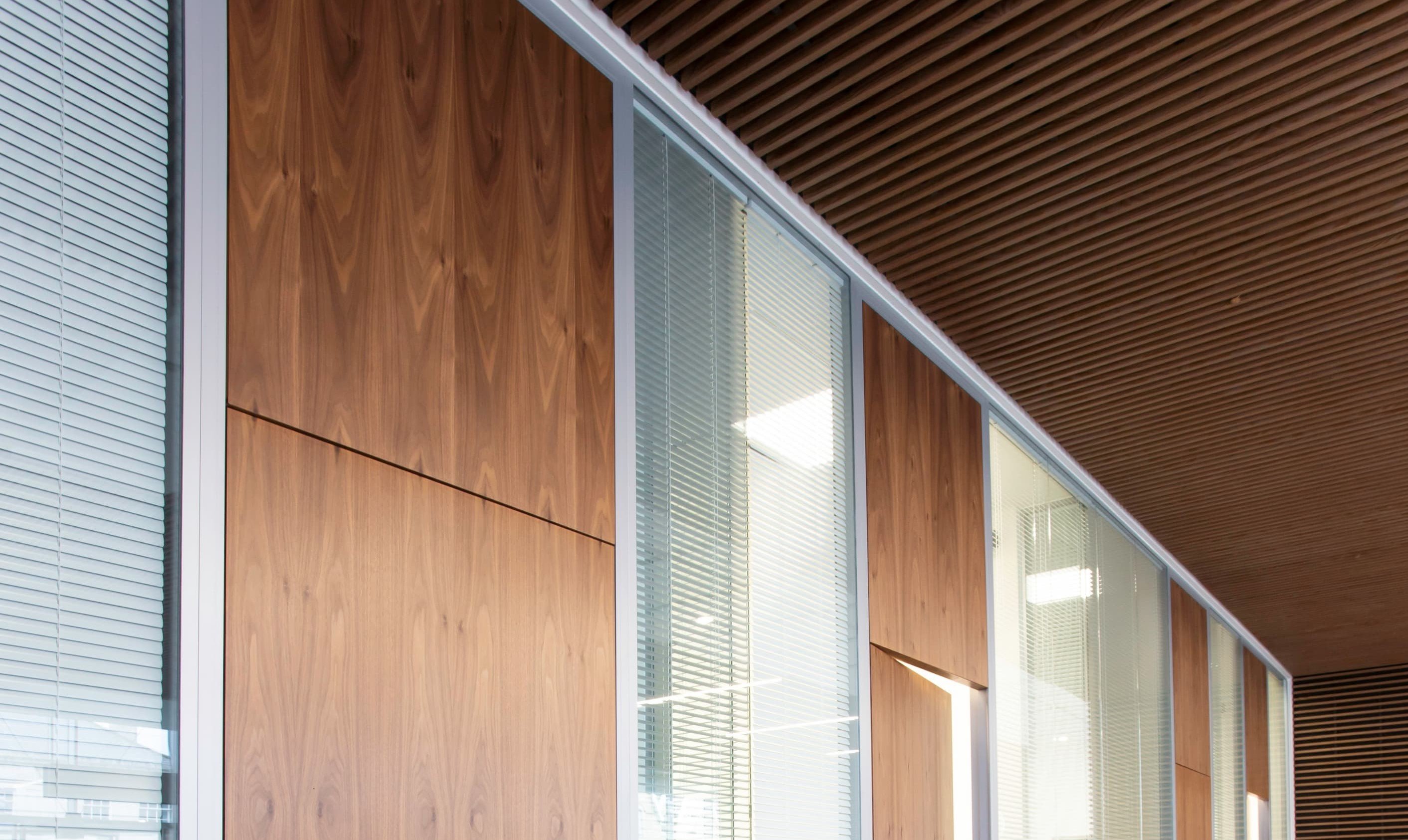Fire Door Fundamentals for Healthcare: Ensuring Compliance and Safety
Chris Robinson , Oct 4, 2023 11:35:33 AM
Within healthcare environments, the safety of patients, visitors, and staff is paramount. As a healthcare estates manager, your role is crucial in maintaining these standards, particularly when it comes to fire safety, a vital aspect often underestimated when creating a safe environment for healing and recovery.
Designed for dedicated healthcare estates managers, this comprehensive post provides expert insights into fire door maintenance and should equip you with the knowledge and tools needed to ensure the safety and compliance of your facilities.
Healthcare presents unique challenges with rigorous regulations and vulnerable occupants. Your responsibilities are vast, and fire safety is just one cornerstone.
However, a commitment to safety extends beyond just mere compliance; it's about saving lives, preserving healthcare environments, and ensuring continuous care. Let's delve into the importance of fire door maintenance in healthcare facilities.
Join us on this journey as we explore the following chapters:
- Understanding Fire Door Regulations: Compliance Requirements for Healthcare Estates Managers
- Fire Doorset Components: Essential Elements and Their Functions
- Inspection Procedures: A Step-by-Step Guide to Assessing Fire Door Performance
- Identifying Fire Door Issues: Recognising Signs of Wear and Non-Compliance
- Certified Repairs: Cost-Effective Solutions for Fire Door Maintenance
- Fire Door Replacement: When to Replace and How to Choose the Right Doorset
- Record-Keeping and Documentation: Tracking Fire Door Inspections and Maintenance Activities
- Staff Training and Awareness: Ensuring Fire Door Safety in Healthcare
- Integrating External Fire Door Maintenance Services into Estates Management
Looking for more information? Click on each header to check out the expanded posts, where we dive into each of these areas one-by-one in more detail, offering practical advice and expert insights to guide you through every stage of your office fit out journey.
Understanding Fire Door Regulations: Compliance Requirements for Healthcare Estates Managers
Fires in UK healthcare properties had a significant impact in 2020 and 2021, with the Health and Safety Executive (HSE) reporting 1,130 fires in healthcare settings in England.
These fires resulted in 11 fatalities, 133 injuries, and £105 million in property damage. Understanding fire door regulations is crucial to prevent contributing to these alarming statistics.
It's important to note that fire door regulations are consistent across regions, but local interpretations of standards may vary. Seeking expert advice is recommended when specifying, installing, or maintaining fire safety measures such as fire doors.
Key UK Fire Door Regulations:
- Building Regulations (England and Wales): Governed by the Ministry of Housing, Communities and Local Government (MHCLG), these regulations establish fire safety standards for all buildings, including healthcare facilities. Important documents include Approved Document B and Building Regulations 2010.
- Scottish Building Standards: Administered by the Scottish Government, these standards outline fire safety requirements for healthcare establishments in Scotland. The Technical Handbook – Fire serves as a critical reference.
- Building Regulations (Northern Ireland): Managed by the Department of Finance, these regulations specify fire safety principles applicable to healthcare premises. Technical Booklet E addresses fire safety.
Fire Door Standards and Certifications:
- British Standard BS 476: Part 22: This standard assesses fire resistance performance, serving as a foundation for evaluating fire doors. It examines factors like insulation and integrity during fire exposure.
- BS EN 1634 and BS EN 1363: These European standards harmonise fire testing methods across member states, measuring factors such as fire resistance, smoke leakage, and thermal insulation.
Understanding Fire Door Components and Ratings:
- Door Leaf, Frame, and Hardware: These components collectively form a 'fire doorset.' Each component must be individually certified and tested to ensure compatibility and full certification. We will explore this further later.
- FD Ratings and Intervals: Fire doors are classified with FD ratings, denoting the minutes of fire resistance they provide. Options include doorsets that offer 30, 60, 90, or 120 minutes of fire resistance, known as FD30, FD60, FD90, and FD120, respectively.
Fire Doorset Components: Essential Elements and Their Functions
Fire doors may appear unremarkable, blending seamlessly into the architecture of healthcare facilities.
Yet, their unassuming facades hide a complex array of components, each carefully engineered to fulfil a critical role in fire safety:
- Door Leaf: The door leaf is the primary barrier and the most visible part of a fire door. Composed of fire-resistant materials, it is designed to withstand the intense heat of a fire, preventing its spread.
- Door Frame: The door frame provides structural support for the door leaf, ensuring it remains in place during a fire. It's essential that the frame is installed correctly to maintain the door's integrity.
- Intumescent Seals: These seals are often concealed within the door's frame or leaf. When exposed to heat, they expand, creating a tight seal between the door and the frame. This helps prevent the passage of smoke and flames.
- Fire Door Hardware: Hardware or Ironmongery includes items such as hinges, latches, and handles. These components are specially designed to withstand the high temperatures of a fire and ensure the door functions correctly when needed.
- Self-Closing Mechanism: Fire doors are typically equipped with self-closing mechanisms. In normal circumstances, they keep the door closed, but in the event of a fire, they allow the door to close automatically, preventing the fire from spreading.
- Vision Panels: Some fire doors feature vision panels made of fire-rated glass. These panels enable visibility while maintaining the door's fire-resistance, allowing occupants to assess conditions on the other side.
Understanding these components and their functions is essential for healthcare estates managers tasked with managing the maintenance of these fire doors. If any one part of these doorsets fails, it can potentially nullify the whole doorsets purpose and therefore they must be treated as one complete entity.
Inspection Procedures: A Step-by-Step Guide to Assessing Fire Door Performance
Regular fire door inspections are essential for maintaining safety in healthcare facilities. These assessments serve as the first line of defence, ensuring that fire doors function reliably during emergencies. Here's a concise step-by-step guide to the key elements inspected during a fire door assessment:
- Door Leaf and Frame: The inspector checks for damage to the door leaf and its frame, caused by wear, tear, or tampering. They verify that the gaps between the door leaf and frame align with the manufacturer's installation instructions. An intrusive inspection of the rear of the door frame may be recommended, potentially requiring architrave removal.
- Intumescent Fire and Smoke Seals: Inspectors ensure that intumescent fire and smoke seals are correctly installed and intact, following manufacturer guidelines. These seals must exhibit no wear and tear, securely attach to the frame's groove, and run continuously around the jambs and head of the doorset.
- Locks, Latches & Hinges: The inspector scrutinises operational locks, latches, and hinges, confirming proper functioning. They pay close attention to wear and tear, looking for signs such as metal fragments, dust, or worn hardware that may necessitate immediate replacement.
- Glazing: All glazing undergoes inspection for damage. The seal around the glass's perimeter and on both sides must be continuous, while glazing beads should be secure and undamaged.
- Hold Open Devices: In healthcare facilities, hold open door devices are crucial. The inspector checks that these devices release the door leaf when activated, ensuring it closes correctly into the frame. They also ensure the device is securely attached to both the door and frame.
Regular fire door inspections are vital to maintaining the safety and functionality of these critical components in healthcare facilities.
Identifying Fire Door Issues: Recognising Signs of Wear and Non-Compliance
As an estates manager, it's crucial to spot signs of wear, damage, and non-compliance in fire doors between expert maintenance visits.
This proactive approach enhances healthcare environment safety and compliance. Here's a concise checklist that you can follow when in-between expert visits:
- Visible Damage: Look for cracks, dents, or holes in the door leaf, frame, or hardware.
- Intumescent Seals: Check for wear, tear, or distortion in the seals, which affect the door's tight seal during a fire.
- Misaligned Doors: Ensure doors sit squarely in their frames without gaps, as misalignment affects closure.
- Damaged Hardware: Confirm that hinges, latches, and handles are secure and functional.
- Warped Door Leaf: Detect irregularities in the door's shape or alignment.
- Clearance: Measure the door's edge clearance, which can impact proper closure.
- Signage: Ensure clear fire door signage indicating fire rating and importance.
- Modifications: Watch for unauthorised changes to fire doors, as they can compromise fire resistance.
- Unusual Sounds: Listen for unusual door sounds, indicating potential issues.
- Self-Closing Mechanism: Test the mechanism to ensure secure closure and latching.
By spotting these issues, you can address them proactively and bolster healthcare facility safety and compliance.
Certified Repairs: Cost-Effective Solutions for Fire Door Maintenance
When it comes to maintaining fire doors in healthcare facilities, expert maintenance teams are invaluable assets. These professionals possess the knowledge and skills to perform certified repairs, ensuring that fire doors are restored to their original integrity.
This repair-not-replace approach not only promotes safety but also delivers cost-effective solutions for long-term maintenance. Remember:
Expertise Matters: Certified maintenance teams are well-versed in industry-approved repair techniques, which are essential to bring damaged fire doors back to compliance and functionality.
Cost-Effective Preservation: Repairing fire doors is often significantly more cost-effective than fully replacing a doorset. Repairing a doorset can cost as little as a third as a complete replacement, whilst still being fully certified and operational.
Beyond Initial Assessments: Expert teams have the expertise to assess whether a seemingly irreparable fire door can, in fact, be restored. They can identify hidden issues and implement solutions that go beyond initial inspector assessments.
In the world of healthcare estate management, where budgets are scrutinised and safety is paramount, certified repairs represent a prudent investment. These repairs not only extend the lifespan of fire doors but also bolster the overall fire safety and compliance of healthcare facilities.
Fire Door Replacement: When to Replace and How to Choose the Right Doorset
Fire door replacement is a decision that should be made with great consideration. Partnering with the right fire door maintenance team can ensure that replacement is always the last resort.
Repairing fire doors is not only more cost-effective but also environmentally conscious, as it minimises waste and maximises the lifespan of these crucial safety devices. However when it comes to replacement, here are some things to keep in mind:
Choosing The Right Approach: Repairing fire doors is a sustainable choice. It reduces the environmental impact associated with manufacturing and disposing of new doorsets, aligning with eco-friendly practices. We would never advise you to make this call on your own. In the first instance, always reach out to a team of experts for a considered evaluation of your existing doorsets.
When Replacement Becomes Necessary: Fire doors typically warrant replacement when the level of damage surpasses the cost-effectiveness of repairs. This may manifest when the material cost, labour cost, or both, make it commercially unviable to continue repairing the doorset.
Signs It's Time for Replacement: Extensive damage, such as irreparable warping or structural compromise, may signal the need for replacement. When the cumulative cost of repairs surpasses the investment in a new, compliant doorset, replacement becomes a logical choice.
Choosing The Right Doorset: Expert fire door teams will be able to advise or provide certified replacement doorsets, which meet or exceed the original specifications. Remember, replacing individual components can jeopardise the doorsets certification and functionality.
Record-Keeping and Documentation: Tracking Fire Door Inspections and Maintenance Activities
Traceability, in essence, is the lifeline that tracks a fire door's manufacture and maintenance history. By meticulously tracking inspections and maintenance activities, we fulfil regulatory requirements and adhere to industry best practices.
Yet, the absence of proper documentation can have dire consequences. Fire doors lacking formal records or traceability to substantiate their initial certification level may be rendered suspect. In essence, these doors become classified as "nominal doorsets," devoid of the crucial evidence that they can effectively fulfil their role in the event of a fire.
Maintaining comprehensive records empowers healthcare estates managers with the information needed to make informed decisions regarding fire door repairs, replacements, or upgrades. Moreover, they simplify regulatory compliance, rendering audits and inspections far more straightforward endeavours.
Staff Training and Awareness: Ensuring Fire Door Safety in Healthcare
In the UK's bustling healthcare sector, responsible for a staggering 570 million patient interactions annually, the duty of care extends to both estates managers and healthcare teams within diverse medical facilities.
Effective communication and training are essential to empower healthcare teams with a deep understanding of fire door safety, proper operation, and defect reporting.
Clear, concise instructions guide the use of fire doors within healthcare settings, with staff members playing a vital role in maintaining their integrity. As a healthcare estates manager, convey the following instructions to healthcare teams:
- No Door Propping: Never prop open fire doors with wedges or furniture, as it compromises their ability to contain fire and smoke.
- Maintain Door Closers: Disengaging door closers disrupts the self-closing mechanism, reducing fire-resistant capabilities.
- Preserve Ironmongery: Avoid tampering with door hardware, as it compromises fire doorsets and their certification.
- Limit Attachments: Refrain from attaching leaflets, signs, hooks, or extra locks to fire doors, as these obstructions hinder their function unless advised by specialist doorset manufacturers or service teams.
- Prompt Issue Reporting: Immediately report loose ironmongery, doors that won't close properly, failing strips, or damage to the appropriate authorities. Prioritising safety is key.
Integrating External Fire Door Maintenance Services into Estates Management
Selecting external teams for estate management, especially fire door maintenance, can be challenging in a highly regulated industry. Precision and expertise are essential.
Fire doors, if not properly maintained, can lose their effectiveness in a fire. Here are strategies for seamlessly integrating external fire door teams into your estate management:
- Expert Fire Door Maintenance: Partnering with expert external teams for fire door maintenance is vital. Fire doorsets require specialised knowledge and experience. These teams understand fire door components and your sector's regulatory requirements.
- Outsourcing relieves estates managers of the burden of keeping up with evolving regulations. Expert teams can identify subtle signs of wear, damage, or non-compliance, ensuring comprehensive inspections, repairs, and replacements for enhanced fire safety.
- Pre-Planned Maintenance: Prevention is key in fire door maintenance. Pre-planned maintenance ensures consistent inspections, repairs, and certified conditions, managed by external experts. Regular maintenance addresses existing concerns and prevents potential issues from daily wear and tear.
- This proactive approach extends fire door lifespan, reduces costly emergency repairs, and keeps facilities in compliance with fire safety regulations.
- Best Practice Integration: Seamlessly integrating fire door maintenance services requires a strategic approach. Partner with expert teams specialising in fire door inspections and repairs. They can assess your fire door inventory, establish priority areas, and create a structured maintenance schedule.
- This schedule outlines regular inspections, servicing, and potential replacements, aligning with recommended frequencies and clear protocols for timely repairs and replacements.
By following these strategies, estates managers can establish a proactive and cohesive approach to fire door maintenance, safeguarding their business and occupants.
Conclusion
It’s important to gain an understanding of the critical aspects of fire door safety, from grasping regulations and identifying common issues to implementing expert maintenance and cultivating awareness among healthcare teams.
The significance of fire door maintenance in healthcare settings cannot be overstated. These are complex systems requiring specialised knowledge and experience for effective servicing.
Collaborating with expert external maintenance teams for fire door upkeep demonstrates your commitment to safeguarding those under your care. These teams possess the expertise to navigate intricate fire safety regulations, spot subtle signs of wear or damage, and conduct thorough inspections, repairs, and replacements.
Fire door maintenance transcends compliance; it embodies a commitment to the safety and well-being of patients, staff, and visitors in healthcare facilities. Embracing expert knowledge, proactive planning, and a culture of vigilance strengthens the protective role of fire doors, ensuring the continued safety, compliance, and resilience of healthcare environments in the face of fire-related risks.
About RW Maintain
RW Maintain provide bespoke service packages for your business or buildings, including the inspection, repair and replacement of all fire-rated doorsets.
RW Maintain argue that healthcare more than any other industry require doorsets to be frequently inspected and preventatively maintained, preventing damage caused by fatigue, unauthorised alteration or ill-advised adaptions.
For those in the healthcare environment we offer bespoke fire doorset services, carefully designed around industry-specific legislation, to meet current British Standards and NHS requirements.
For a fixed-term, you are assured that all fire doors are maintained in accordance with British standards, keeping you and your occupants safe.
If you have a building or project that would benefit from a maintenance package for your fire doors, contact an expert at RW Maintain today.


